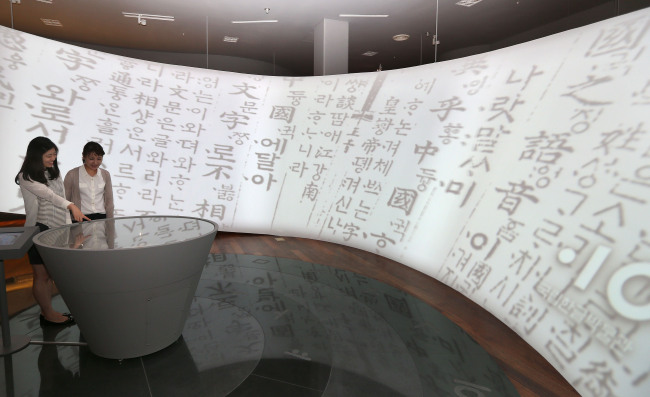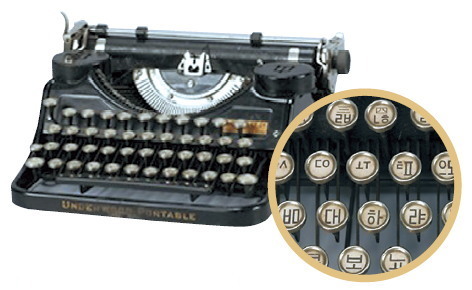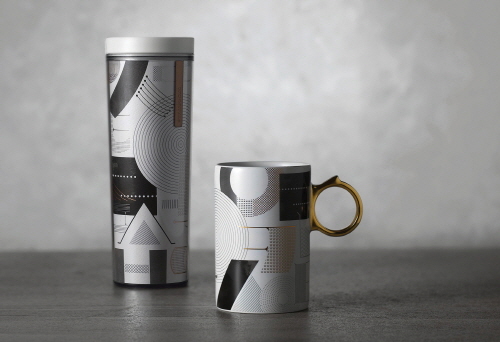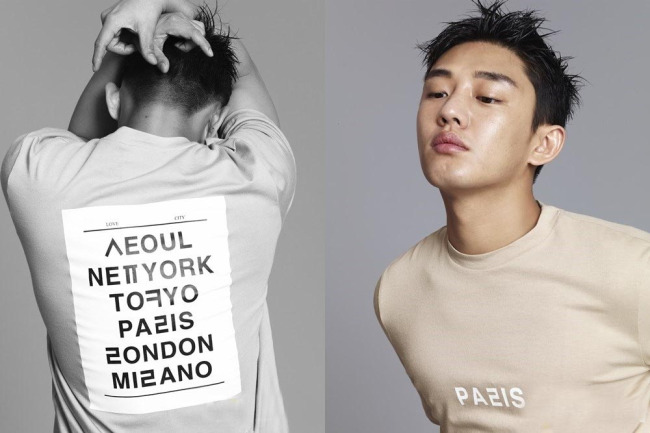Hangeul, the writing system for the Korean language, has always been a source of pride for Koreans. So much so that they mark Oct. 9 as Hangeul Day, a national holiday celebrating its creation more than 500 years ago.
Efforts to cherish King Sejong’s great gift to the people went further this year, resulting in a brand new museum dedicated solely to the alphabet.
Hangeul museum
The National Hangeul Museum opens to the public Thursday, with the stated mission of raising the public’s understanding of its language.
It is also starting a monthlong festival celebrating the 24 letters ― 14 consonants and 10 vowels ― that make up Hangeul.
“Hangeul is the No. 1 linguistic and cultural asset passed down to us. The National Hangeul Museum aims to promote its value and extend it beyond the linguistic realm by promoting the use of Hangeul as a motif in art and culture,” Moon Young-ho, the museum’s inaugural president, told reporters last month during a press preview.
“Hangeul is not just a writing system for our language. It’s a cultural medium,” he added.
 |
The main exhibition hall of the National Hangeul Museum. (The National Hangul Museum) |
Located near the National Museum of Korea in Yongsan, the museum’s building is an architectural embodiment of the philosophy behind the alphabet ― heaven (.), earth (ㅡ) and man (ㅣ). It has four floors ― three above ground and one below.
Nearly 10,000 Hangeul-related artifacts are housed there.
Some of them have been newly discovered by the museum, according to Hong Yun-pyo who led the preparatory committee for the museum.
“At least 10 of them deserve national treasure designations,” he said.
Among the highlights of the museum’s inaugural exhibition are an original copy of “Hunminjeongeum Haerye,” a commentary on “Hunminjeongeum,” the original promulgation of the alphabet on loan from the privately run Gansong Art Museum; “Yongbieocheonga,” the first work written in Hangeul; the oldest Korean typewriter in existence and a cache of letters handwritten in Korean by King Jeongjo, a Joseon era ruler who took the throne some 350 years after King Sejong the Great.
 |
The oldest Korean typewriter in existence, invented by Song Ki-ju in 1933 (The National Hangul Museum) |
The third floor of the museum is dedicated to children and foreign visitors, with various multimedia devices and programs designed to help them understand the basics of Hangeul.
The museum is located near Exit 2 of Ichon Station on Seoul’s Line No. 4. It closes on Mondays. Admission is free. For details, visit www.hangeul.go.kr.
Hangeul meets art, culture
For some Korean artists, Hangeul is not just an alphabet. It’s their source of artistic inspiration.
Many years after designer Lie Sang-bong’s signature Hangeul-themed fashion show, the Korean characters are now more widely used as a design motif in everyday life in Korea ― from Starbucks tumblers to T-shirts.
 |
Starbucks’ new tumbler and mug using Hangeul as a design motif (Starbucks) |
 |
This T-shirt is a collaborative work of up-and-coming fashion designer Nohant and actor Yoo Ah-in. (Nohant) |
Earlier this year, up-and-coming designer Nohant and actor Yoo Ah-in jointly released a line of T-shirts, featuring a mix of Korean and English letters, which became an instant sensation.
A stage musical currently running at Theater Yong inside the National Museum of Korea tells the story of King Sejong and all the obstacles he faced within the court as he pushed to create a writing system for Korean.
The “Deep Rooted Tree” is based on the best-selling novel of the same title by Lee Jeong-myeong. A TV drama adaptation of the book ran in 2011 on local channel SBS, winning both public and critical acclaim.
The musical raises the curtain Thursday and runs until Oct. 18. Ticket prices range from 40,000 won to 80,000 won. For details, call (02) 523-0986.
By Lee Sun-young (
milaya@heraldcorp.com)











